The past year has seen significant developments in the Long War. Pakistan teeters on a civil war and a potential war with India, after Taliban gains and an attack launched on Mumbai from within Pakistan. India has emerged as a central battlefield in the war. Iraq has dealt major defeats to al Qaeda and the Mahdi Army, and is moving towards reconciliation. Afghanistan experienced the worst year since the US invasion to oust the Taliban in 2001. A “surge” in Afghanistan will take place this year. Iran is close to developing a nuclear weapon, and the West has no plan to avert the crisis. Al Qaeda is poised to retake control of Somalia. Yemen remains an al Qaeda sanctuary.
The battles continue in lesser known theaters. The US struck a senior al Qaeda leader in Syria, and Imad Mugniyah was assassinated in Damascus. The Philippines made progress against its Islamic insurgency and dealt blows to Abu Sayyaf and the radical Rajah Solaiman Movement. Indonesia has driven Jemaah Islamiyah underground. Algeria fought a low-intensity terror insurgency with al Qaeda in the Islamic Maghreb.
The following is an overview of the major developments in the most active theaters across the globe in the Long War.
|
|
|
Baitullah Mehsud from a recent Taliban video. |
Pakistan
Pakistan remains the central front in the war against al Qaeda, the Taliban, and allied movements such as and Lashkar-e-Taiba. The Pakistani Taliban, led by South Waziristan chieftan Baitullah Mehsud, is in full control of the tribal areas and has gained more ground in Pakistan’s Northwest Frontier Province. The districts of Swat, Shangla, Bannu, Tank, Dir, and Malakand are under Taliban control, while the Taliban has a strong presence in every other district.
As of last summer, US intelligence estimated the Taliban and al Qaeda run more than 150 training camps and maintain more than 400 support locations throughout the northwest. The Taliban has attacked NATO convoys in Khyber and the provincial capital of Peshawar, and forced the closure of the Khyber Pass twice. Despite the rise of the Taliban, the government and military have conducted numerous negotiations with the Taliban throughout the year.
The US has attempted to counter al Qaeda’s growth in Pakistan’s tribal areas by ramping up airstrikes against camps and safe houses that are believed to facilitate al Qaeda external operations against the West and in Afghanistan. There were 36 recorded airstrikes and cross-border raids in 2008, compared to 10 in 2006 and 2007 combined. Five senior al Qaeda leaders, including Abu Laith al Libi and Abu Khabab al Masri, were killed during the 2008 strikes.
|
Map of the tribal areas and the Northwest Frontier Province. The government signed peace agreements in the red agencies/ districts (the military said Shangla was under Taliban control in October); purple districts are under de facto Taliban control; yellow regions are under Taliban influence. |
The problem of Pakistani complicity in the global war became difficult to ignore after Lashkar-e-Taiba, with the help of elements within Pakistan’s military and intelligence service, struck in Mumbai. More than 170 people were killed and the city was shut down for nearly three days in the military-style assault. Fearing an Indian invasion, Pakistan has redeployed Army units from the northwest back to the eastern front with India.
On the political front, Pervez Musharraf resigned from the office of president and allowed for the successful democratic transition of power after nine years of a military dictatorship. The Pakistan People’s Party, whose former leader was the slain Benazir Bhutto, won the election and formed a coalition government. The government has been unsuccessful at reining in the Inter-Service Intelligence agency and fighting the Taliban.
More on Pakistan at The Long War Journal: Main Entries, Today In, News
India
|
|
|
Ajmal Amir Kasab, outside the train station in Mumbai during the November terror attack. |
During 2008, India has emerged as a major theater in the war. India suffered the most attacks and casualties of those countries not currently engaged in active fighting with the Taliban, al Qaeda, and other terror groups. The Mumbai terror attack in November 2008 capped a year of mass casualty strikes on Indian soil. Over the course of 2008, terrorist attacks in Mumbai, Jaipur, Ahmedabad, Bangalore, Assam, and New Delhi resulted in the deaths of 332 Indians and foreigners and more than 1,280 wounded. The Mumbai attack differed in scope and severity from previous attacks, in that small teams of terrorists conducted a military-styled assault from the sea and closed down a major city for almost three days.
Al Qaeda-linked Harkat-ul-Jihad-i-Islami, Jaish-e-Mohammad, and Lashkar-e-Taiba have been implicated in the attacks, along with the Students’ Islamic Movement of India (SIMI) and the Indian Mujahideen. Indian and Western intelligence agencies have established that SIMI and the Indian Mujahideen are fronts for the Pakistani terror groups, created to mask their involvement in the attacks.
The Indian government had largely ignored the earlier bombings, but the military assault on Mumbai appears to have brought an end to this stance. Since the end of November, India has pressed hard against Pakistan to close down the multitude of terror groups based on its soil. India is also contemplating airstrikes against terror camps in Pakistan-occupied Kashmir and in eastern Pakistan.
More on India at The Long War Journal: Main Entries, Today In, News
|
|
|
Abu Qaswarah, al Qaeda in Iraq’s second in command, was killed in Mosul in October 2008. Image courtesy of Multinational Forces Iraq. |
Iraq
In two short years, the Iraqi and the US and Coalition forces have turned around what seemed to be a hopeless situation. By the end of 2006, many had given up Iraq as lost to al Qaeda, Sunni insurgents, the Mahdi Army, Iran, and death squads. But with a change in the counterinsurgency plan, an increase in US and Iraqi forces, the infusion of new US military leadership, and an expansion of the Anbar Awakening program in 2007, violence was dramatically reduced and the Iraqi government was given the time and space needed to further reconciliation.
Iraqi and US forces followed up a highly successful 2007 by continuing to attack the enemies of the state. The Iraqi government launched a major offensive against the Mahdi Army in Basrah in March. The fighting soon expanded to Baghdad and central and southern Iraq. The Iraqi military quickly caught its balance after stumbling out of the gate in Basrah. More troops were rushed to Basrah and the Mahdi Army was crushed. The US and Iraqi militaries defeated the Mahdi Army in their stronghold of Sadr City in Baghdad, and the offensive was carried out through the summer and fall. The Mahdi Army and the Sadrist movement took such a beating that Muqtada al Sadr disbanded the militia and pulled his party from upcoming provincial elections. In addition, Iran’s Ramazan Corps’ network was essentially dismantled in central and southern Iraq.
The fight was also taken to the remaining al Qaeda strongholds in Diyala, Kirkuk, Salahadin, and Ninewa provinces. Iraqi forces, backed by the US, were massed for operation in northern Diyala and Mosul. While the fight is still on in Mosul, al Qaeda has few remaining strongholds and has shifted from an insurgency that holds ground to a terrorist movement lashing out against targets. Al Qaeda’s internal communications show how badly the terror group has been beaten in Iraq. Al Qaeda in Iraq leader Abu Ayyub al Masri fled the country and Abu Qaswarah, the group’s second in command was killed in Mosul.
The violence in Iraq has been reduced by 80 percent compared to 2007, and the incidence of violence is at its lowest since 2003, when the US ousted Saddam Hussein from power. Al Qaeda, the Mahdi Army, and Iran have suffered strategic defeats in Iraq in 2008, but as US military commanders note, the peace is still fragile. US forces are beginning to draw down, and the status of forces agreement between the US and Iraq stipulates that US combat forces must withdraw from Iraqi cities by the summer of 2009 and out of Iraq entirely by the end of 2011. The Iraqi security forces have improved dramatically and will fill the gaps. The US must remain to provide guidance and support to ensure that the peace remains.
More on Iraq at The Long War Journal: Main Entries, Today In, News
Afghanistan
Aided by bases, training camps, and a nearly endless supply of recruits across the border in Pakistan, the Taliban has made significant gains in its attempt to retake control of Afghanistan. The government’s failure to provide effective governance and legitimate security forces has eroded the public’s confidence and provided space for the Taliban to expand its influence. The resurgent Taliban, along with the allied Hizb-i-Islami and the Haqqani Network, has ramped up operations in southern and eastern Afghanistan, and has expanded its control of provinces around Kabul and in the northwest.
The Taliban essentially controls the provinces of Wardak and Logar just outside Kabul, and has increased its presence in Baglan province in the northwest. Attacks are up in Nimroz, Farah, and Herat provinces in the west. Many of the districts in Kandahar province are under effective Taliban control, while fighting is still heavy in neighboring Helmand province. The Taliban has established shadow governments in many of Afghanistan’s districts and provinces, with courts, checkpoints, security forces, and taxation.
During 2008, the Taliban was able to pull off several high-profile attacks in Afghanistan, including an assault on the Serena hotel in Kabul, an assassination attempt on President Karzai at a ceremony outside of Kabul, a suicide attack on the Indian embassy in Kabul, and a series of complex attacks on forward operating bases in eastern Afghanistan. The Taliban has also launched multiple strikes from Pakistan’s tribal areas against Coalition and Afghan bases. Overall, IED attacks against Coalition and Afghan forces in Afghanistan doubled in 2008.
This year, the United States will surge approximately 30,000 additional troops, including four combat brigades and one combat aviation brigade, effectively doubling the amount of US troops in country. The full contingent will not arrive in country until the summer of 2009. The US will attempt to duplicate the success of Iraq’s tribal Awakening by courting local tribes in some regions in eastern Afghanistan. NATO has failed to answer the call for more troops, sparking serious concerns about the alliance’s effectiveness. Canada will withdraw all of its forces by the end of 2011.
More on Afghanistan at The Long War Journal: Main entries, Today In, News
|
Sheikh Abu Mukhtar Robow (left) and Saleh Ali Saleh Nabhan (faced covered) in a propaganda video acquired by The Long War Journal. |
Somalia
Al Qaeda-backed As Shabaab, or the Somali Youth Movement, and allied Islamist insurgent groups are prepared to retake control of Somalia after a year of gains in central and southern Somalia. The Islamist groups have taken control over the entire southern and central regions of Somalia, while the rump Transitional Federal Government controls pockets in Mogadishu and Baidoa. Shabaab has also successfully conducted suicide attacks in the semi-autonomous regions of Puntland and Somaliland.
Al Qaeda has effectively re-established its training camps in southern Somalia. Shabaab has officially requested to join al Qaeda, and the request has been welcomed by senior al Qaeda leaders.
The US conducted several “over the horizon” airstrikes in an effort to take out senior Shabaab and al Qaeda leaders operating in southern Somalia. Aden Hashi Ayro was killed in one such strike in May 2008.
The African Union failed to provide the required number of peacekeepers; only one-quarter of the pledged troops arrived. Ethiopia, which invaded Somalia at the end of 2006 to oust the Islamic Courts Union, is prepared to withdraw its thousands of troops in early 2009.
More on Somalia at The Long War Journal: Main Entries, Today In, News
|
Flash Presentation on the Ramazan Corps and the Iranian Ratlines into Iraq. Click the map to view. A Flash Player is required to view, click to download. |
Iran
Iran continues to be one of the largest state sponsors of terror, and at the same time the nation continues its pursuit of a nuclear weapons program. During 2008, the West failed to come up with a comprehensive plan to deal with Iran’s nuclear program. The United States has resorted to sanctioning groups and individuals behind Iran’s nuclear program. Banks, shipping and weapons companies, and members of the Iranian Revolutionary Guards Corps have been placed on the US Treasury’s list of sanctioned organizations.
Iran suffered a strategic defeat in Iraq with the US and Iraq efforts to dismantle the Iranian-backed Mahdi Army and Iran’s Ramazan Corps network that moved weapons, money, and fighters into the theater. More than 10 Iranian agents were killed or captured inside Iraq last year. Although Iran still has influence and maintains the ability to conduct operations in Iraq, its power in Iraq has been greatly diminished.
In Lebanon, Iran’s proxy Hezbollah was able to force the government to include them in the government and give the terror group veto power over government decisions. Hezbollah’s ascent to power occurred after days of street fighting in Beirut and in the North between its armed wing and the various armed factions in Lebanon. The Lebanese Army sat out of the fighting.
More on Iran at The Long War Journal: Main Entries, Today In, News
Yemen
After Pakistan, Yemen is considered to be one of the largest havens for al Qaeda. Many powerful elements within Yemen’s government support al Qaeda’s presence. Thousands of Yemeni fighters returned from Iraq since mid-2007. Many have served in militias sponsored by the government to fight opposition groups. Yemen routinely frees jailed al Qaeda members.
Al Qaeda in Yemen conducted multiple suicide and conventional attacks against foreigners and Yemen’s oil industry. The most high-profile attack took place in the capital after a suicide bomber breached the outer gate of the US Embassy. An assault team managed to enter the outer security barrier before the attack was thwarted.
The Yemeni prisons remain a revolving door for al Qaeda operatives captured in the country. A Yemeni appeals court reduced Jaber Elbanah’s 10-year jail term to five years. Elbanah is wanted by the US for providing material support to Al Qaeda and is believed to have helped recruit the Lackawanna Six. A Yemeni court released Elbanah on bail in February 2008.
In August 2008, Yemen’s new vice and virtue committee elected Sheikh Abdulmajid al Zindani as its president. Zindani was named by the US Treasury as a Specially Designated Global Terrorist and a bin Laden loyalist.
More on Yemen at The Long War Journal: Main Entries, Today In, News
|
Imad Mugniyah, Iranian operative and leader of Hezbollah’s military wing, was killed in Damascus, Syria. Click image to view. |
Syria
Syria has long supported or looked the other way as al Qaeda and Sunni insurgents used the country as a transit point and safe haven for fighters entering western Iraq. More than 90 percent of the suicide bombers have been estimated to have entered Iraq via Syria.
The US sent a strong message to Syria in October 2008 when it launched the first recorded cross-border strike inside the country since the invasion of Iraq in 2003. Nine terrorists were reported killed after US commandos dropped from helicopters conducted a raid in eastern Syria. The target was Abu Ghadiya, a senior al Qaeda leader who had been in charge of the Syrian facilitation network since 2005. Ghadiya and his staff were killed in the attack.
Earlier in the year, Imad Mugniyah, the leader of Hezbollah’s military wing and a senior officer in Iranian Revolutionary Guards Corps, was killed in car bombing in the capital of Damascus. It is thought that Israeli intelligence was behind the attack. Mugniyah, a pioneer in modern terrorism, was behind numerous terror attacks throughout the world, including the 1983 Beirut suicide attacks that killed 241 US Marines and 58 French paratroopers.
More on Syria at The Long War Journal: Main Entries,Today In, and News
Philippines
Talks between the Moro Islamic Liberation Front and the government broke down after MILF conducted several terrorist and military attacks against villages in areas adjacent to MILF control. The government launched offensives and overran several MILF camps. The Philippine armed forces killed several mid-level Abu Sayyaf and Jemaah Islamiyah leaders during clashes in 2008. Senior Abu Sayyaf and Jemaah Islamiyah leaders, including Dulmatin, are still believed to shelter in MILF camps. The allied Rajah Solaiman Movement is thought to have been dismantled.
More on the Philippines at The Long War Journal: Main Entries, Today In, News
Indonesia
Jemaah Islamiyah, al Qaeda’s Southeast Asia affiliate, has largely gone underground in Indonesia after senior leaders in the group have been killed or captured. Indonesia finally executed Bali bombers Amrozi, Mukhlas, and Imam Samudra. In April, an Indonesian court sentenced Jemaah Islamiyah leaders Abu Dujana and Zarkasih to 15 years in prison each after they were found guilty of terrorism charges. But in a disturbing development, a song recorded on a cell phone by Imam Samudra became a top hit in the country.
More on Indonesia at The Long War Journal: Today In, News
Algeria
After conducting multiple high-profile attacks against government institutions and international agencies in 2007, al Qaeda in the Islamic Maghreb’s operations took the form of a terrorist insurgency. Al Qaeda targeted security patrols and installations with small-scale military attacks and suicide strikes. The vast majority of these attacks took place over the summer. The government said 185 al Qaeda members, including emirs and foreign fighters, have been killed in 2008. There have been no suicide attacks since August.
More on Algeria at The Long War Journal: Main Entries, Today In, News
Israel & the Palestinian Territories
Major fighting broke out between Israel and the Hamas-led government in the Gaza strip after the six-month truce between the two expired at the end of December. Hamas and allied terror groups launched scores of rockets into southern Israel three days prior to the expiration of the truce. Israel responded by launching a major air campaign that targeted Hamas security installations, rocket launch sites, weapons and ammunition storage depots, and the homes of senior Hamas leaders and military commanders. After five days of fighting, more than 340 terrorists and 60 civilians were killed. Israel has called up reserves and hinted it may conduct group operations. Iran and Hezbollah, two Shia entities, have backed the Sunni Hamas, while the Arab nations have refused to back Hamas but have called for an end to the fighting.
More on Israel at The Long War Journal: Main Entries, Today In, News
For previous editions, see:


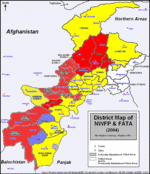
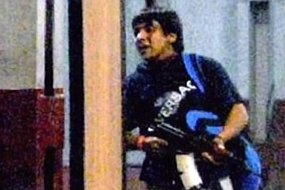
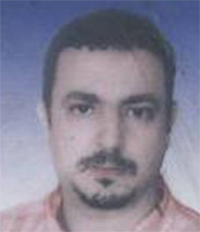

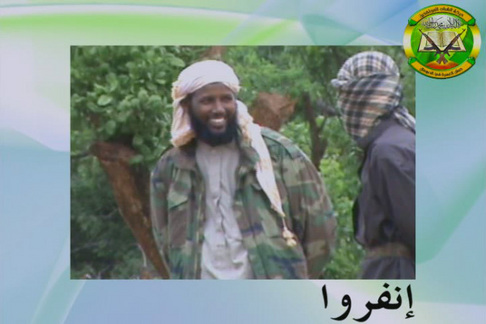

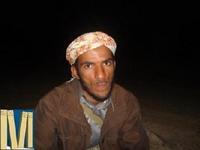








11 Comments
I want to thank you for your excellent coverage of the War in Iraq and Afghanistan, alongside with your deep interest on ther minor fronts of this global war.
Although I do believe that your news agency is in dire need for more coverage of the Israel-Palestine-Lebanon battle front. It is indeed one of the most important and relevant battle fronts of the Global War On Terror, and it seems like if you are letting it behind. Iran and Syria are involved and under the current struggle you don’t seem to be aware of the strategic consequences the current war might have on radical fundamentalists all over the globe.
Lets hope Afghanistan in 2009 proves as decisive as 2007 was for Iraq.
Dear Bill,
The Nukes of Pakistan are not covered at all especially the threat by Pakistani scientist to launch nukes in ten mts,
You are also not giving sufficient proof for nuke challenge of Iran.IAEA has not supported the claim of Israel or even USA of Iran nuke programme.It is signatory of NPT.allows IAEA inspection and it can enrich uranium as allowed under NPT.
Brilliant summary of current status of the war. Many thanks for providing the coverage. I learned quite a bit from this article because it pulled so many disparate pieces together. Thanks again.
The Thunder Run has linked to this post in the blog post From the Front: 01/02/2009 News and Personal dispatches from the front and the home front.
Thanks, Bill. Keep up the good work.
It is both a long war and a world-wide one. Should we call it the 3rd world war?
Good job Bill
Nice recap of where things stand at the beginning of 2009, excellent work as usual. A big thank you to the folks at TLWJ for their coverage in 2008 (and years pasts), looking forward to the same in 2009.
Iraq is definitely the bright spot in this. I think we now at the point where stabilization and gradual withdraw from Iraq is starting to improve the overall security situation around Iraq. Back in 2006 with the security situation is Iraq deteriorating both Al Qaeda and Hezbollah had a lot of regional clout. They were able to aggressively pursue their projects in Lebanon, Gaza, against Israel, and Jordan.
Hezbollah looks a little tired right now, and seems to have let up some of it’s pressure on the Lebanese government. Syrian aggressiveness seems to have cooled a great deal this year. There may now be a little political space between Syria and Iranians, at least to the extent the Syrians may be less inclined to take on projects for Iran that may be suicidal to their own national interests. There has been noticeably less military posturing on the Syria, Lebanon, and Israeli borders since Mugniyah’s death.
The improving situation in Iraq also allows the US to redistribute troops and assets to Afghanistan and other areas. We will have to see what further effect our draw down in Iraq has on security operations inside and outside Iraq. We seem very much on track to formally step into the background in Iraqi security operations this summer. Beyond that we will have to see what problems crop up as Iraqi administrators are increasingly on their own. I don’t think that transition will be totally smooth or painless.
On an overall strategic scale, improvement in Iraqi stability makes a large scale war in the Gulf or Eastern Mediterranean region much less likely. It also seems much less likely that the deteriorating Pakistani situation will touch off political problems across the Arab world. A little more time to further stabilize the Iraqi situation would help in this respect.
WW I; WW II; WW III, The Cold War; WW IV, Terror;
Cf. Norman Podharetz, World War IV
Thanks for the very informative website.
All I can comment is that you have to be even handed on arab isreali conflict. Surely the Israelis have acted as good as terrorists by employing banned weapons like phosporous bombs on civilians
in Gaza Strip. Humanity is at shame when you look at the pictures coming out of Gaza.